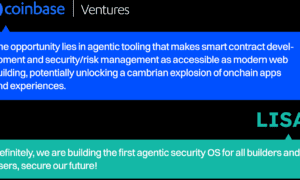Referencing this is a paper from Writuraj Sarma, an independent AI researcher, whose groundbreaking paper “Explainability in NLP: Interpretable AI Models for Text Classification and Sentiment Analysis”(https://www.ijcnis.org/index.php/ijcnis/article/view/8056 ) in 2019 at the intersection of NLP and AI models for text classification and sentiment analysis, predictive analytics and machine learning has been referenced for answers and direction.
Opening the Black Box: How Explainable NLP Can Make AI Smarter and Trustworthy
AI used to live only in labs. Now you see it in phones, in chat bots, in loanapproval screens and even in hospital decision tools. Big language models can write sentences that sound real, but nobody really knows why they pick one word over another. That “blackbox” feel makes people nervous. Some researchers – Writuraj Sarma in 2019 for example – say that if we peek inside, we can make these models not just clever but also safer. Knowing how a model reasons gives us a chance to fix it. That’s why Explainable NLP has become a musthave for turning raw power into trustworthy AI that actually helps people.
Why Explainability is the key – to define and to trust…
Companies in finance, health, law and media all use NLP to pull meaning out of messy text – think product reviews, news headlines, doctor notes or contracts. When those outputs start to affect credit scores, medical alerts or what you see online, the law steps in. The EU GDPR says you Tools that make decisions clear – what Writuraj suggest
• Highlighting key words – Tools like SHAP or LIME give every token a score. Imagine a review called “slow and defective” gets flagged as “poor quality.” The explainer will show slow and defective got the highest scores. You instantly see why the model complained.
• Attention maps – Transformers keep a table of how much each word looks at each other word. Plot that and you might see “market crash” lights up the map when a report triggers a “highrisk” flag. Experts can then say “yes, the model caught the right warning.”
• Rulebased shortcuts – Simple trees or keyword lists work like “if contract contains ‘indemnity’, raise a flag.” They lack deep nuance, but they are easy for auditors to check.
All three follow a simple rule: it’s not enough to be accurate, you also have to be able to explain it (Sarma, 2019). Mix them and you get a model that performs and stays transparent, which keeps stakeholders calm and regulators happy.
“Explainability provide reasoning—so we can see which features drove a decision, surface bias, and meet ‘right-to-explanation’ obligations and we can justify outcomes to regulators and users,” says Writuraj Sarma in this paper.
Tools that make decisions clear – what Writuraj suggest
• Highlighting key words – Tools like SHAP or LIME give every token a score. Imagine a review called “slow and defective” gets flagged as “poor quality.” The explainer will show slow and defective got the highest scores. You instantly see why the model complained.
• Attention maps – Transformers keep a table of how much each word looks at each other word. Plot that and you might see “market crash” lights up the map when a report triggers a “highrisk” flag. Experts can then say “yes, the model caught the right warning.”
• Rulebased shortcuts – Simple trees or keyword lists work like “if contract contains ‘indemnity’, raise a flag.” They lack deep nuance but they are easy for auditors to check.
All three follow a simple rule: it’s not enough to be accurate, you also have to be able to explain it (Sarma, 2019). Mix them and you get a model that performs and stays transparent, which keeps stakeholders calm and regulators happy.
“Clear decisions create bridge between trust and adoption and gives users, regulators, and businesses reason to align with confidence – stresses Writuraj
RealWorld Places Where It Helps
Have a “right to explanation.” The US is moving toward an Algorithmic Accountability Act. Both force firms to tell you why a computer made a decision. Sarma puts it bluntly:
“Explainability provide reasoning—so we can see which features drove a decision, surface bias, and meet ‘righttoexplanation’ obligations and we can justify outcomes to regulators and users.”
When you can point to the part of the text that tipped the scale, you can spot hidden bias and you can tweak the system. That’s why explainability is the bridge that turns a mystery prediction into something you can stand behind.
Finance – Investment banks feed earningscall transcripts, tweets and filings into NLP. When the word downgradepops up, a highlighted token warns analysts of risk. Attention visuals can also show why a model moved a credit rating up.
Healthcare – Sepsis alerts often read nursing notes. A SHAP breakdown might reveal “rapid heartrate” and “high lactate” as the decisive clues, giving doctors a quick reason to act.
Legal – Contractreview tools flag risky clauses. A rulebased shortcut spots termination for convenience and an attention map highlights surrounding text so lawyers know which part to rewrite.
Social Media – Moderation systems must justify a hatespeech label. Showing the exact phrase “genocide is justified” that set off the flag satisfies internal audits and user demands for fairness.
These examples prove that interpretability isn’t a nice extra – it’s core to making LLMdriven tools useful.
The Hurdles Ahead
Posthoc explainers like SHAP and LIME have limits. First, their scores are only approximations; they can miss the complex ways words interact inside a deep net (Ribeiro et al., 2016). Second, calculating those scores for millions of documents eats up time and compute, sometimes forcing teams to cut corners on speed (Lundberg & Lee, 2017).
Explainability also isn’t a cure. Rulebased shortcuts stay simple, but they can ignore subtle patterns that neural nets detect. Spotting bias in a heat map is just the first step – it doesn’t automatically remove the bias baked into training data (Barocas & Selbst, 2016). So explanations should be seen as a diagnostic tool, not a fix. You still need solid data cleaning, biasmitigation pipelines and constant monitoring.
Researchers are already looking past static explainers. New ideas include causal frameworks that follow how tweaking an input ripple through the model, interactive “whatif” dashboards where users can move importance sliders in real time, and multimodal explainability that ties text, images and audio together. Those advances could shrink the gap between what humans expect and what machines do, making LLMs both smarter and more accountable.
Looking Ahead
Regulators, competitors and ethicists are all pushing for transparent AI. As Sarma warns, “balancing accuracy with transparency is foundational for responsible AI.” Companies that bake clear reasoning into every chat turn will not just avoid fines – they’ll unlock insights hidden in the black box. In the next few years, being able to point to a sentence and say “this is why the model answered that way” will move from a nicetohave feature to a makeorbreak requirement for trustworthy AI.
About the Author:
Writuraj Sarma is an independent AI researcher and working as a Senior Product Manager at Samsung SEA. He has over 13+ years of experience designing and implementing AI platforms, data warehousing in Fortune 500 companies. He holds bachelor’s in computer science engineering and MBA . Writuraj has led digital transformation initiatives across various industries and delivered keynote talks and judged opportunitiesin recognized forums related to tech.



































